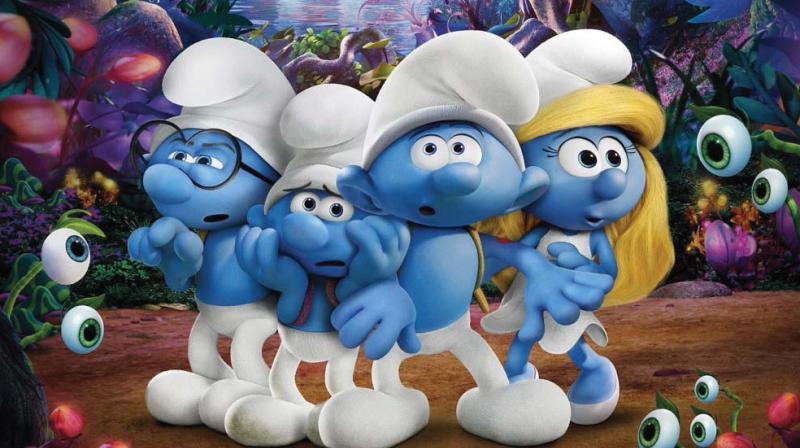Smurfs: The Lost Village movie review Of death, dying & other grown-up issues
This is not an invalid enquiry too, for this tradition of filmmaking did result in both Bambi and in The Lion King.

She is just a lump of clay,” observes one of the various smurfs. Above all, this is a method of emphasis: the other smurfs have — led in this by the most senior among them — spent the last few minutes in complete denial. They are in collective, complete disbelief over the death of a character — and refuse, therefore, to mourn her. The declaration seems to, however, push them over an emotional threshold — “just a lump of clay” — and it is then that they are able to achieve, so to say, a catharsis. The greatest accomplishment of this scene is however not emotional (the trajectory is entirely standard: disbelief, acknowledgement, catharsis) but aesthetic.
When the line is uttered, the camera hovers over “the lump” for a second, two seconds and documents, well, nothing at all. Lifeless on the ground, entirely stationary, is an abstraction. An irregular shape — a blue, three-dimensional one — belongs not to a photorealistic, entirely typical Hollywood animation film but an experimental demonstration produced by an independent AI studio in Japan. The self-reflexiveness of this image must not be lost: in a film where each character/detail originates essentially from a lifeless, shapeless mass of colour — which is sculpted, modelled, rendered through digital processes — death means a return to the original, seed form. As a response to the statement, the seniormost smurf launches into a celebration, “…She may not have been a pure smurf, but she had qualities which were the most smurf out of us all.” This is instructive too, for in a film that is entirely about appearances (smurfs are, after all, characters defined by a distinctive appearance), this is contemplation, instead, of a spirit.
It is a spirit that is the cause of the film’s events too — most things happen in Smurfs: The Lost Village not because they are inevitable, but because the lead characters — the smurfs — are characters driven by their impulses. They are curious, and therefore, cross over the wall into the forbidden forest, where one of them is abducted to be taken to Gargamel, the prototypical evil wizard. Later, their bravery causes them to attempt a rescue: this sets off another series of chases, misadventures, battles, etc. Ultimately, they are tribal, so they invest themselves in protecting each other — and an eponymous village of those like them — from the design of the wizard (a most impotent villain, a failure, even his cat mocks him).
Smurfs: The Lost Village exists in its present form as an approximation of a mid-20th century Belgium comic phenomena by American pop culture. This means the characters at the heart of it are entirely vacuous, meaningless ciphers, identifiable only due to a distinctive appearance. This is a clever strategy, for it allows the film’s writers to render the film — much like various other animated titles of the last few years (Angry Birds, Hotel Transylvania) — a parable, a political allegory, a narrative that is useful only not for what it is, but what it could mean. The central group at the heart of it — the smurfs themselves — are for instance, a persecuted minority the key to whose survival is not a direct fight against their oppressor (who is a loser), but in the ability to trust each other, and then as a consequence, in their ability to organise.
Location of meaning is however a parlour game — its essence. Smurfs: The Lost Village is noticeable only for how it reveres convention. “…Just a lump of clay”, declares the character and I would have thought, “It is really possible? Is it possible that an animated children’s film produced by Hollywood in 2017 acknowledges the event of death?”
This is not an invalid enquiry too, for this tradition of filmmaking did result in both Bambi and in The Lion King. A minute, two minutes later, the lump of clay is modelled and rendered into the shape of the original character. She breaks into a dance and all ends merrily.
The writer is programmer, Lightcube Film Society

